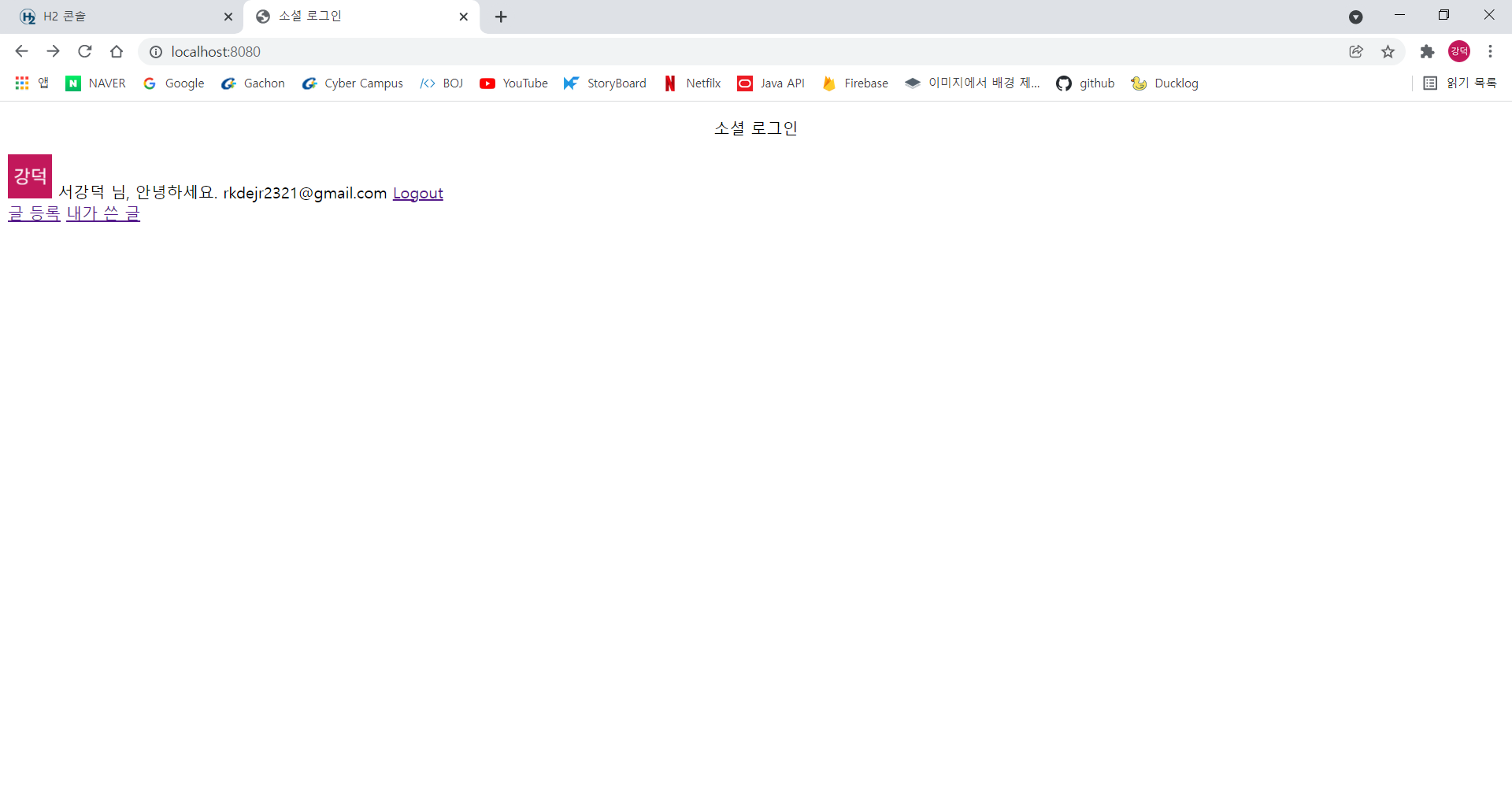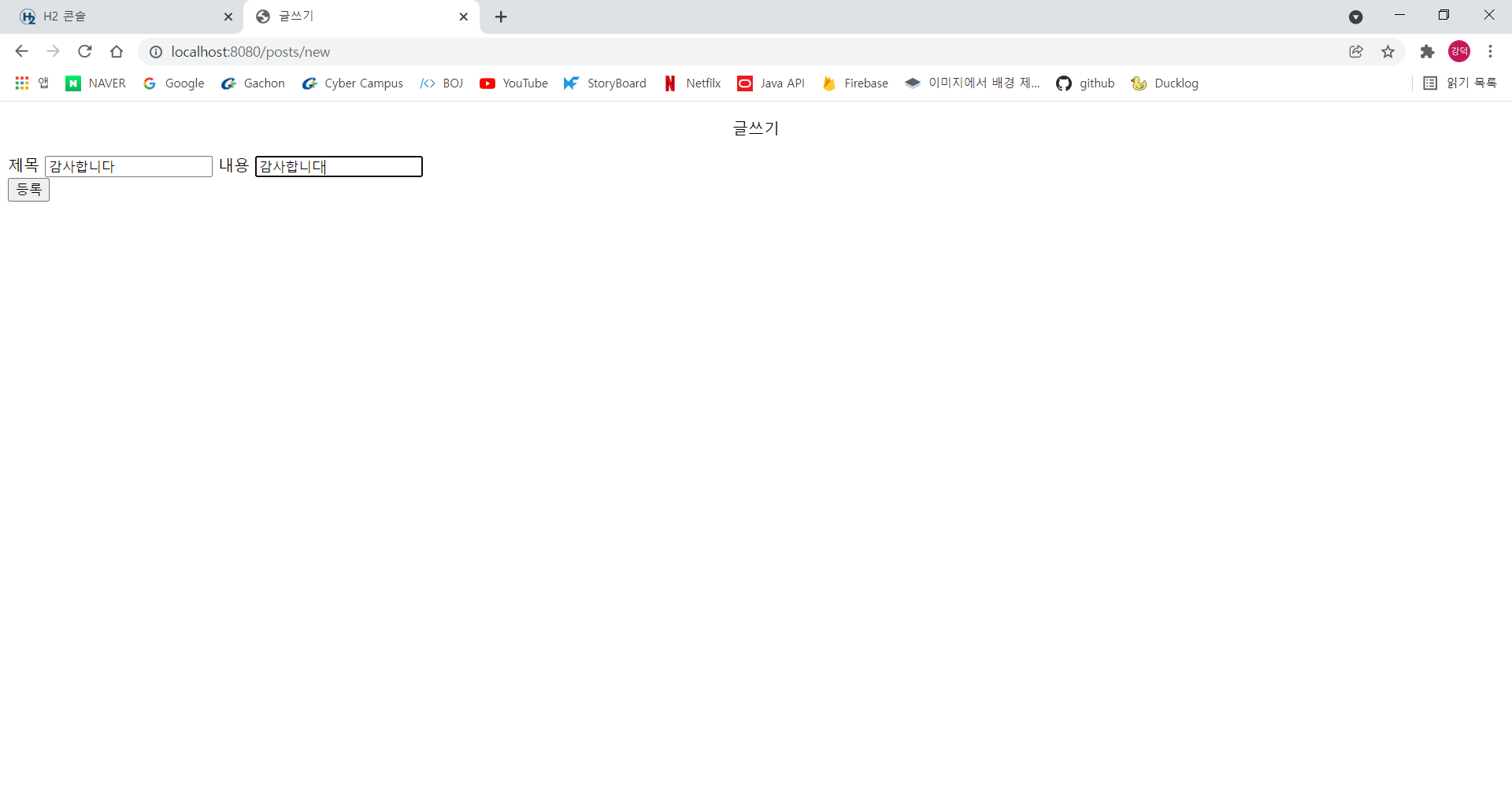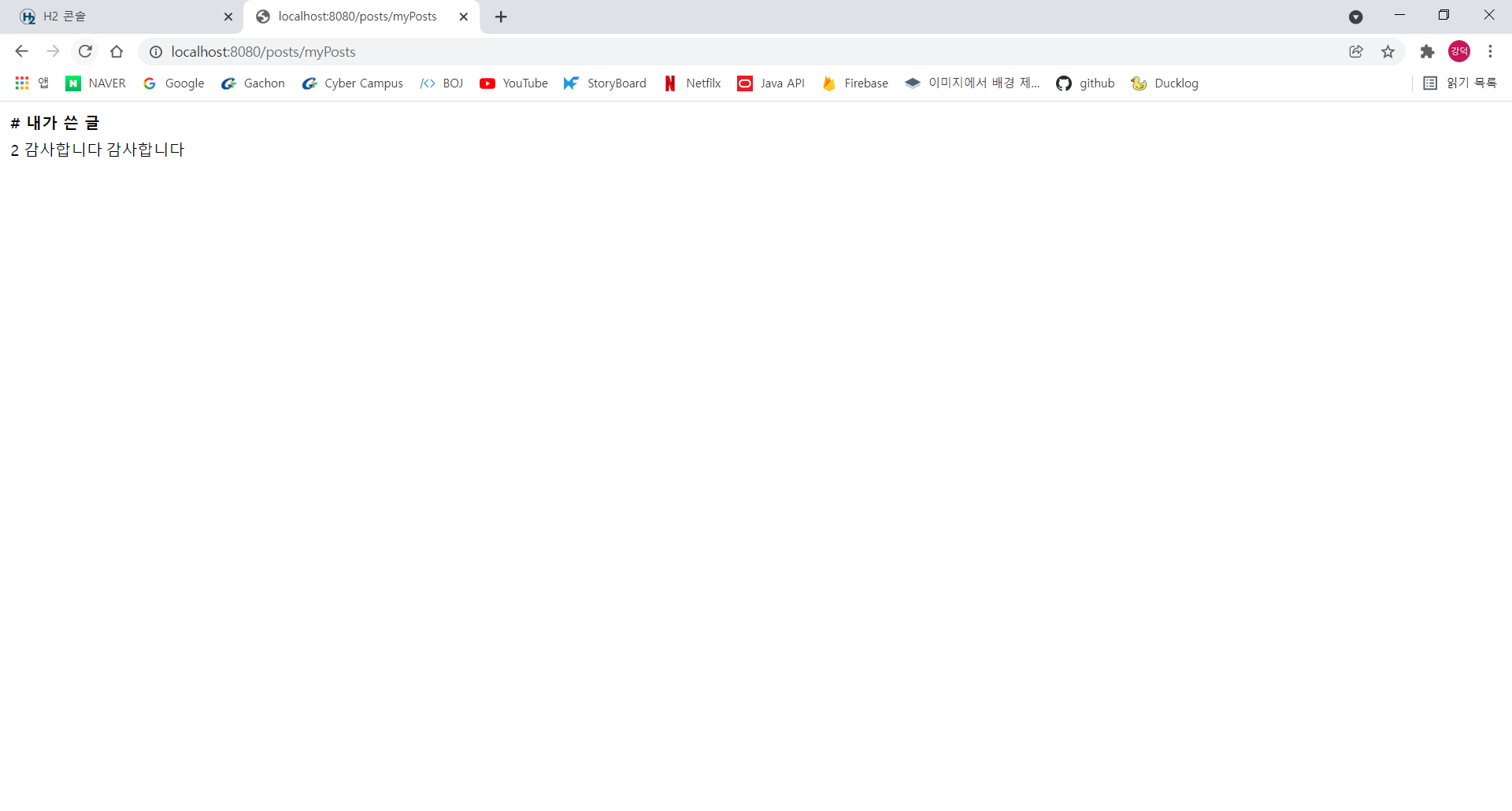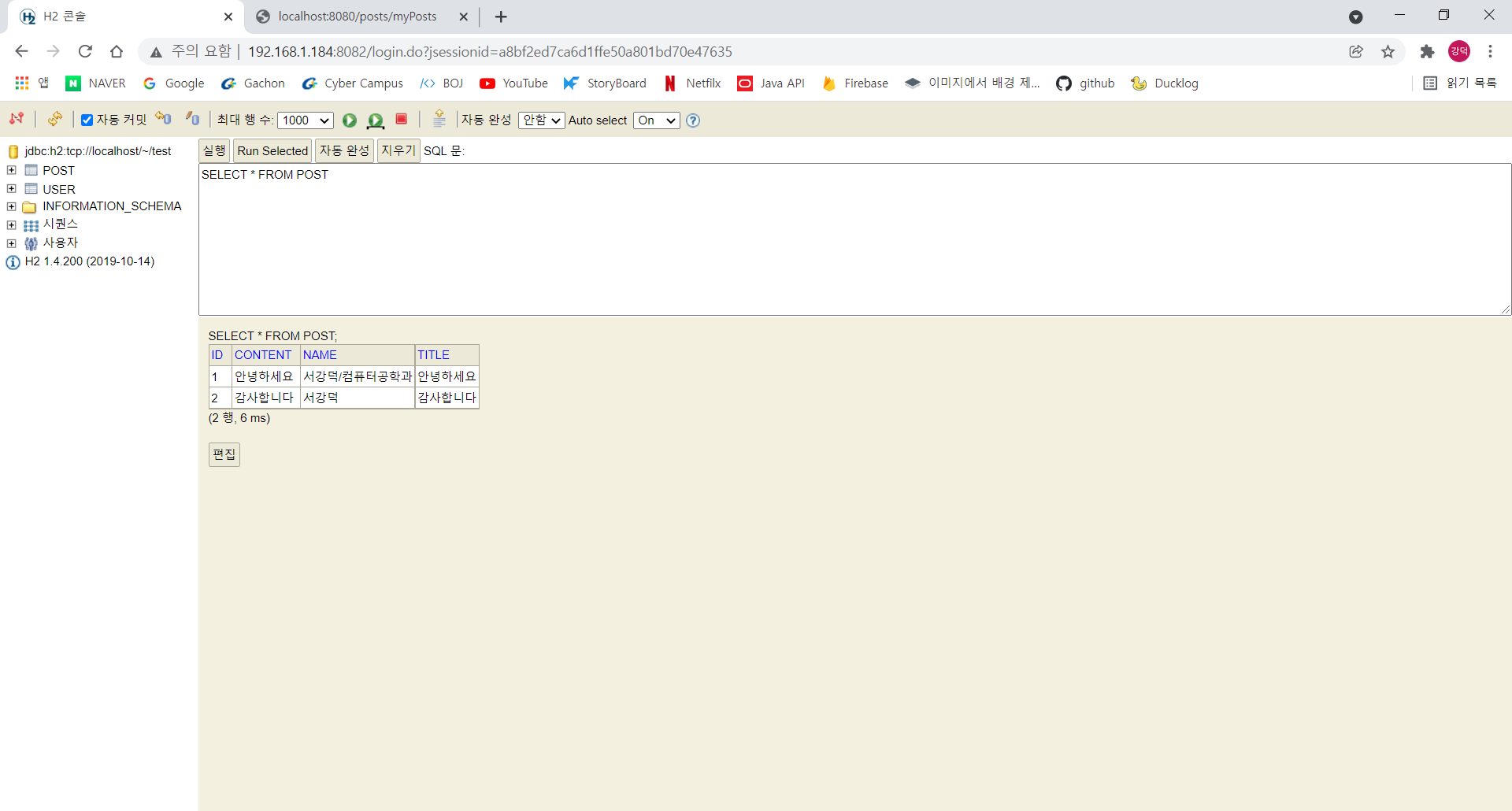게시판 구현
개요
앞선 포스팅에서 구글로 소셜 로그인을 구현했다. 그럼 이제 글쓰기를 만들어 보자. 로그인 상태에서만 글을 쓸 수 있고 내가 쓴 글을 확인할 수 있게 만들 것이다.
Post.java 생성
쓴 글을 담을수 있는 post 객체를 만들자. 우선 작성자와 제목, 내용정도만 필요하다.
@Getter
@NoArgsConstructor
@Entity
public class Post {
@Id
@GeneratedValue(strategy = GenerationType.IDENTITY) // 자동생성
private Long id;
private String name;
private String title;
private String content;
public Post(String name, String title, String content) {
this.name = name;
this.title = title;
this.content = content;
}
public String getName() {
return name;
}
public String getTitle() {
return title;
}
public String getContent() {
return content;
}
public Long getId() {
return id;
}
}
postForm.java 생성
html에서 title과 content를 받고 Post 객체로 넘겨줄 postForm을 만들자
public class postForm {
private String name;
private String title;
private String content;
public postForm(String name, String title, String content) {
this.name = name;
this.title = title;
this.content = content;
}
public String getName() {
return name;
}
public String getTitle() {
return title;
}
public String getContent() {
return content;
}
}
postSaveController.java 생성
웹 브라우저에서 입력받은 데이터를 DB에 저장하는 컨트롤러 생성 로그인한 session의 이름을 post 작성자로 넣어 DB에 저장해야한다.
@Controller
public class postSaveController {
private final postSaveService postSaveService;
private final HttpSession httpSession;
@Autowired
public postSaveController(postSaveService postSaveService, HttpSession httpSession){
this.postSaveService = postSaveService;
this.httpSession = httpSession;
}
@GetMapping("/posts/new")
public String post(){
return "/posts/save";
}
@PostMapping(value = "/posts/new")
public String postSave(postForm postform) {
SessionUser user = (SessionUser) httpSession.getAttribute("user");
Post post = new Post(user.getName(),postform.getTitle(),postform.getContent());
postSaveService.savePost(post);
return "redirect:/";
}
}
PostRepository.java 생성
@Repository
public interface PostRepository{
Post save(Post post);
List<Post> findAll();
}
JpaPostRepository.java 생성
public class JpaPostRepository implements PostRepository {
private final EntityManager em;
public JpaPostRepository(EntityManager em) {
this.em = em;
}
@Override
public Post save(Post post) {
em.persist(post);
return post;
}
@Override
public List<Post> findAll() {
return em.createQuery("select m from Post m",Post.class)
.getResultList();
}
}
SpringDataJpaPostRepository.java 생성
public interface SpringDataJpaPostRepository extends JpaRepository<Post, Long>, PostRepository{
Post save(Post post);
List<Post> findAll();
}
save.html 작성
글을 쓸 수 있는 html을 작성
<!DOCTYPE HTML>
<html xmlns:th="http://www.thymeleaf.org" xmlns:sec="http://www.w3.org/1999/xhtml">
<head>
<title>글쓰기</title>
<meta http-equiv="Content-Type" content="text/html; charset=UTF-8" />
</head>
<body>
<p align="center">
글쓰기
</p>
<div class="container">
<form action="/posts/new" method="post">
<div class="form-group">
<label for="title">제목</label>
<input type="text" id="title" name="title" placeholder="제목을 입력하세요">
<label for="content">내용</label>
<input type="text" id="content" name="content" placeholder="내용을 입력하세요">
</div>
<button type="submit">등록</button>
</form>
</div> <!-- /container -->
</div>
</body>
</html>
그리고 홈 화면(index.html)에 글 쓰기 버튼 코드를 추가
<a href="/posts/new" role="button" class="btn btn-primary float-right">글 등록</a>
homeController에 추가
@GetMapping("/posts/myPosts")
public String myPostList(Model model){
SessionUser user = (SessionUser) httpSession.getAttribute("user");
List<Post> posts = postService.findPost();
model.addAttribute("posts",posts);
model.addAttribute("userName",user.getName());
return "posts/myPosts";
}
myPosts.html 작성
로그인한 계정이 쓴 글만 확인할 수 있게 html 작성
<html xmlns:th="http://www.thymeleaf.org">
<body>
<div class="container">
<div>
<table>
<thead>
<tr>
<th>#</th>
<th>내가 쓴 글</th>
</tr>
</thead>
<tbody>
<tr th:each="post : ${posts}">
<div th:if="${post.name == userName}">
<td th:text="${post.id}"></td>
<td th:text="${post.title}"></td>
<td th:text="${post.content}"></td>
</div>
</tr>
</tbody>
</table>
</div>
</div> <!-- /container -->
</body>
</html>
컨트롤러에서 model로 posts 리스트와 로그인한 session의 name을 넘겨 받으면 반복문을 돌면서 posts의 이름과 session name이 일치하는 post만 출력한다.
결과
DB에는 두 사람의 글이 하나씩 들어있지만 내가 쓴 글을 확인해보면 로그인 한 아이디가 쓴 글만 보여진다.




